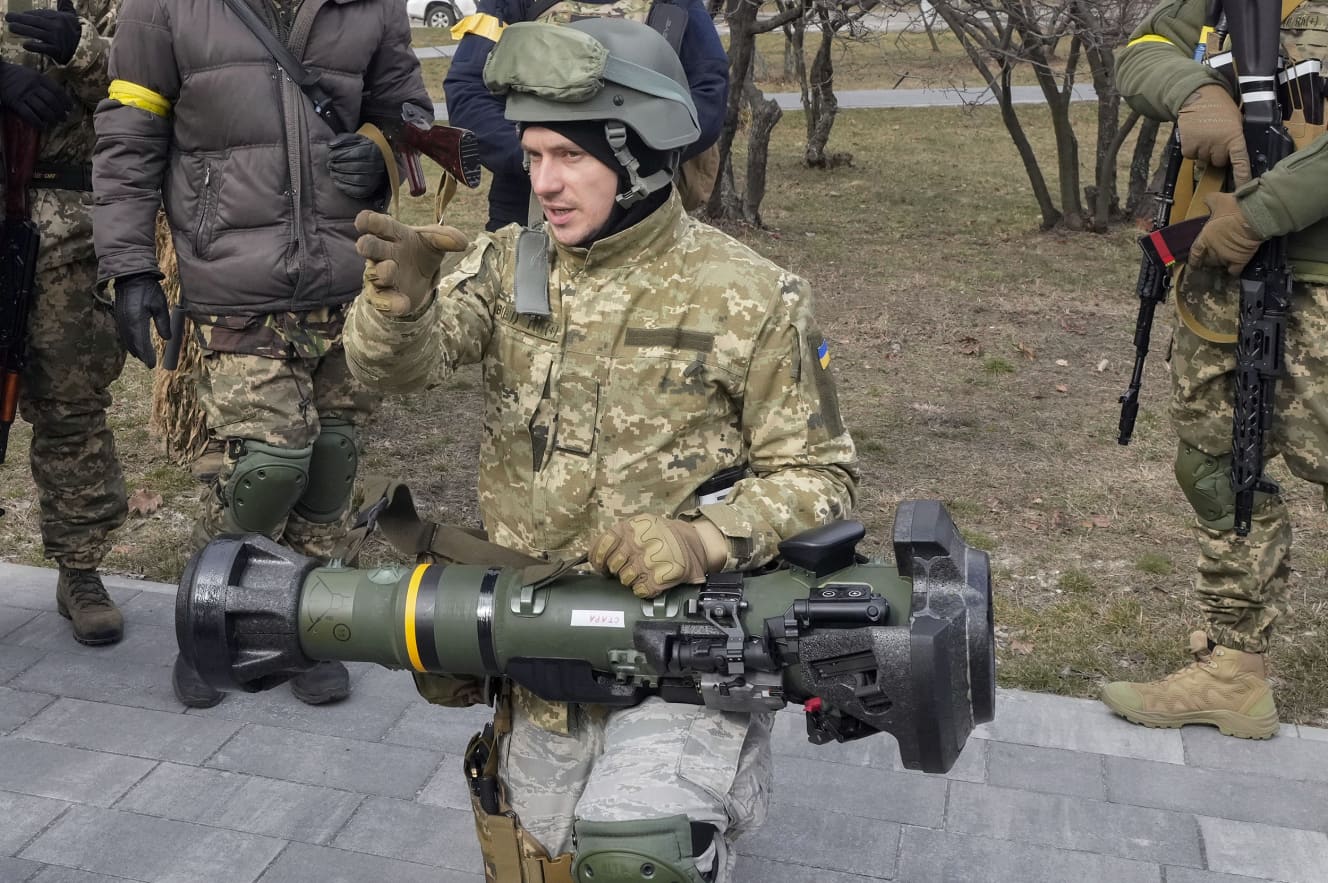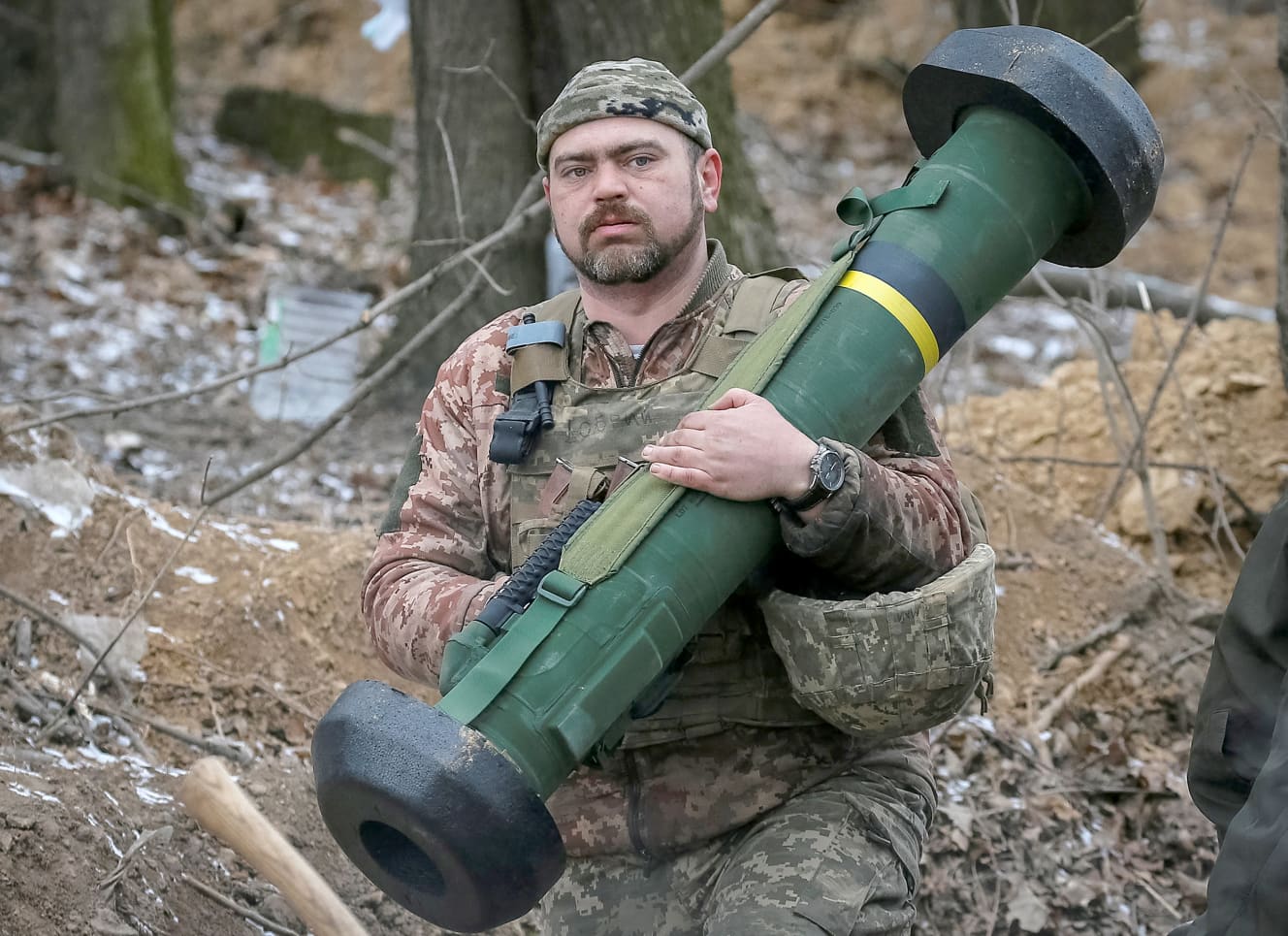Putin Considers Nukes “Too Bad Possibility” after Major Ukrainian Military Counterattack
Russian troops on the outskirts of the capital have retreated more than 20 km.

The Russian military is now in a state of exhaustion due to inadequate supplies of ammunition, food, medicine, and other items. It is believed that the Ukrainian military has watched the timing and launched counterattacks in various areas.
One month has passed since the Russian military invasion of Ukraine. The phase of the war, which had been bogged down, is about to change.
Look at the map. The Ukrainian military has launched a reverse offensive in the metropolitan areas of Kiev, the capital, and Kharkiv, the second largest city, and has recaptured some areas. On March 24, the Ukrainians used ballistic missiles to sink the large Russian landing ship Saratov, which was carrying supplies, in the southeastern port of Berzhansk. How did Ukraine manage to overcome a ten-fold difference in strength? Experts cite the following five factors.
(1) Dispersion of Russian forces and lack of preparation
The Russian army that invaded Ukraine was said to be 150,000 strong in total. Why was Ukraine able to counterattack despite the overwhelming gap in troop strength? Defense journalist Shigeru Handa explains.
The basis of the Art of War is the concentration of forces. The Russian army aimed at the nearest cities from the north, east, and south, which led to a dispersion of forces. The standard strategy is to conduct air strikes with missiles and fighter jets and seize air control before the army units move in, but the Russians invaded blindly, without even taking control of the airspace. The Ukrainian army had a geographical advantage, allowing it to move in the shortest distance possible and making it easy to ambush them. Naturally, they would struggle.”
President Zelensky, 44, announced that the number of Ukrainian military casualties was approximately 1,300 (as of March 29). The Russian army, on the other hand, is estimated to have lost more than 15,000 men.
According to internal documents of the FSB (Russian Federal Security Service), President Vladimir Putin (69) intended to overrun Kiev in one week. Normally, supply centers would be established in towns in the middle of the city so that supplies could be delivered quickly to the front lines, but the Russian military, confident of its ability to control the blitz, failed to do so. They had been unable to replace guns, bulletproof vests, and other equipment for a month and were in tatters, and their supplies were running out. The death toll is expected to rise further.
(2) Demoralization of Russian Armed Forces
The majority of Russian soldiers are military academy students and young soldiers who have just been drafted, and many of them have been sent to war without having been told of the war’s motives. A former reporter said, “The Russian soldiers are mostly students at military schools and young soldiers who have just been drafted into the army.
A POW said, “I thought it was just a military exercise. They don’t even know where they are. Violations of military discipline are also rampant, with some soldiers selling weapons to obtain food and money.
On March 25, Western intelligence officials announced that at least seven Russian military officers had been killed. The chain of command has also been severely affected. Mr. Handa tells the story.
As tanks and armored vehicles are being destroyed one after another, lieutenant generals and major generals are being sent to the front lines to inspire soldiers, but they are being targeted by snipers from the Ukrainian army.


(iii) Introduction of the latest weapons
In his speech before the invasion, President Putin mentioned NATO (North Atlantic Treaty Organization) modernization assistance to the Ukrainian military. In fact, since the annexation of Crimea in 2002, the Ukrainian military has been reinforcing its forces in anticipation of the next threat, and has received a large number of the latest weapons from NATO countries. Until February, they were receiving training from the U.S. military. Among the missiles, the Javelin, a portable anti-tank missile, has inflicted tremendous damage on the Russian military.
It can be used anywhere, so it is very effective in guerrilla warfare. After being fired, the missile reacts to a heat source and automatically tracks its target. The Javelin uses a “tandem shaped explosive” projectile, which is powerful enough to destroy the armor of Russian tanks. The anti-tank missile “NLAW,” jointly developed by Sweden and the United Kingdom, is also in use. It has a range of 1 km, half that of the Javelin’s 2 km, but it is lighter and more maneuverable. Moreover, while Javelin missiles cost 20 million yen each, NLAW missiles 5 million yen and inexpensive. By combining these two types, we are able to deal with enemies at any distance.
Other portable surface-to-air missiles, such as the U.S.-made “Stinger” and the Polish-made “PZR Grom,” also play a role in maintaining air superiority.


4) Record warm winter in Ukraine
Nature is also on Ukraine’s side. Usually, January and February can be cooler than -20°C, but ’22 was a mild winter with temperatures hovering around -15°C.
The Russian army uses 50-ton tanks called ‘T-72’ and ‘T-80. Ukraine is one of the world’s leading agricultural countries, so much of the country is now muddy due to thawing snow. The Russian army is not able to move as much as it would like,” Handa said.
Journalist Kosuke Tsuneoka speaks.
Military vehicles avoiding the muddy road and coming alongside the road are easy targets for Javelins and NLAW. The Ukrainian military is using small, maneuverable vehicles to maneuver around and target tanks.
(5) Clever information strategy
“In information warfare, Ukraine is far ahead of Russia because NATO has provided us with a ‘tactical command and communications system.’ They are able to keep track of the movements of Russian aircraft and Russian ground troops collected by NATO’s early warning and control aircraft. The Russian military’s radio systems are being intercepted by Western nations’ cyber units, and their operations are also being intercepted.
The existence of next-generation fighter jets capable of remote control and automated aviation is another factor that has allowed them to gain an advantage in the information war.
The Ukrainian military has an unmanned attack aircraft called the Bailaktar TB2, which was provided by Turkey. This is a state-of-the-art weapon that can automatically fly over the enemy camp for a certain period of time and monitor the local situation via the Internet. Elon Musk (50), founder of the U.S. space venture SpaceX, has provided a satellite called “Starlink” as a base station. The system is also significant in that it provides a system for This system allows drones and unmanned aircraft to fly unaffected by radio interference,” said Tsuneoka.
From the beginning, President Putin has suggested the use of tactical nuclear weapons. Now that the war is tipping, is the worst-case scenario getting closer?
The State SS, whose main mission is to suppress dissidents, is gaining more and more influence in the Russian military. Its commander, Viktor Zolotov, 68, Putin’s closest aide, will stop at nothing to achieve his goals. Under his leadership, the use of chemical weapons such as sarin and Novichok is now being considered. If the war hardens and is pushed back, Zolotov will advocate the use of nuclear weapons, and Putin will push the button without hesitation,” said a Defense Ministry official.
It is Ukraine’s victory or Russia’s nuclear weapons that will end the war – or is it?

From the April 15, 2022 issue of FRIDAY
PHOTO: Afro
